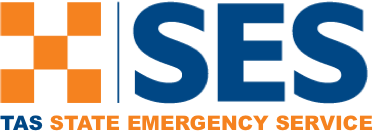What is the OILL Process?
(Observation – Insight – Lessons Identified – Lessons Learned)
The OILL process is one approach to synthesising observations, analysing for insights and identifying lessons (AIDR, 2019:25). The approach is widely used by Emergency Management agencies and is the recommended approach in Tasmania. Observations are the basic building blocks for Lessons Management and can highlight a good practice, or an opportunity for improvement.

A description of each step in the OILL process is provided below (AIDR, 2019:24).
Observation: a record of a noteworthy fact or occurrence that someone has heard, seen, noticed or experienced as an opportunity for improvement or an example of good practice.
Insight: A deduction drawn from the evidence collected (observations), which needs to be further considered. Insights occur when there are multiple observations (pieces of evidence), which are similarly themed. As a general rule, a minimum of three observations (from multiple sources) should be used for an insight although an insight may be developed when a single observation poses a high risk to the organisation. Insights may also identify an opportunity for further analysis. Insights can be positive or negative, and can contribute to reinforcing positive behaviour or changing practices. An insight defines the issue, not the solution.
Lesson: A lesson is knowledge or understanding gained by experience (NATO JALLC 2011). The experience may be positive (a good practice) or negative (a gap in performance or doctrine).
Lesson identified: a conclusion with a determined root cause based on the analysis of one or more insights and a viable course of action that can either sustain a positive action or address an area for improvement.
Lesson learned: A lesson is only learned once the approved change is implemented and embedded in the organisation. Depending on the changes required, it may take several years for the change to be institutionalised across the organisation. A full iteration of a lessons learned cycle would involve the identification of a lesson, an action proposed and agreed, the solution implemented and then tested/validated to ensure the change is an improvement and the desired behaviour is sustained across the organisation.
OILL Process Summary Chart

Writing Good Observations
A good observation must contain sufficient details to allow further root cause analysis and identification of learning opportunities. Following any exercise or incident, there is an opportunity to learn from experience.
New South Wales Office of Emergency Management suggests a simple process=Observe-Share-Learn as an example of a lessons management observation process and is reflected in the flow chart below.

New South Wales Office of Emergency Management suggests we all have a responsibility to reflect on experience and share our observations, so others may benefit. By building a culture of sharing and learning, we can help build a safer, stronger, more disaster resilient Emergency Management sector. Observations are the basic building blocks for lessons management and can highlight a good practice to sustain, or an opportunity for improvement. A range of activities may be undertaken by organisations to gather observations, including: debrief, after action review, real time monitoring and self-reporting.Once you make an observation, follow the process to capture and submit it. (EM-NSW(OSEM)2019-emergency.nsw.gov.au )



Observation documentation should include:
- Who
- When
- Where
- What
More details of these steps are contained in the accordion below:
- Who did the observation come from?
- What is their position, role or agency?
- Do not use names. This is not about identifying, blaming or shaming individuals.
This gives context of the circumstances and how far in the past it occurred. It also allows comparison with other experiences from the same event.
- What was the date?
- Did the activity have a name?
- Where did the activity occur?
- Was it in specific terrain, an operations centre, as part of a project or during an exercise?
- This allows comparison with other experiences in the same sort of location or environment.
This is the detail of what occurred, what was seen, heard or felt and the impacts (i.e. This is what happened and was observed and it had this impact and/or result).
The WebEOC boards designed for Lessons Management:
- A board is an online representation of a notice board traditionally used in an Operations centre. Users can easily input key information into the relevant board, sharing the information in real time.
- The Observation Log provides users with a single location to record information for upcoming debriefs and lessons management. This Observation Log records the “What went well and Why?” and the “What didn’t go well and Why?” during and after an incident.
In relation to Lessons Management WebEOC can:
- Record observations
- Enable observations to be collated using National Themes
WebEOC is utilised by:
Government agencies, Local Government Municipal Councils and Non Government Organisations all input data into WebEOC. This allows for sharing and dissemination of information across numerous boards. Agencies that engage in the platform include:
- All Emergency Services, Tasmania Police, Tasmania Fire Service, State Emergency Service and Ambulance Tasmania.
- Other government departments including but not limited to Departments of State Growth, Health, Education, DPIPWE and Local Councils.
- Other providers include Tas Networks, Telstra, NBN, TasWater, Airports and Seaports.
- Volunteer groups Salvation Army, Surf Life Saving Tasmania, Australian Red Cross and many others.
The video below provides an Introduction to WebEOC which provides awareness of WebEOC.
View of WebEOC Observation Board


